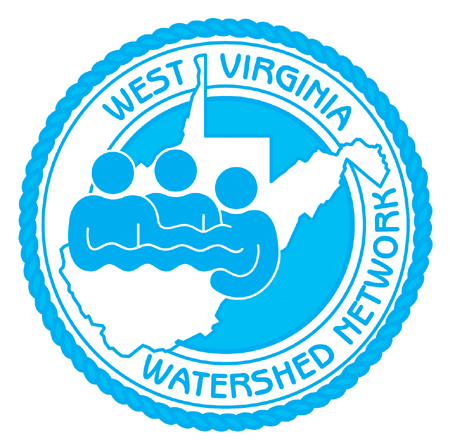 | | WV WaterNet: Fall Edition |
| |
|
| 2023 Watershed Symposium: Save the Date |
| 2023 Statewide Watershed Symposium The 2023 statewide watershed symposium will be held on September 30th, 2023 at Canaan Valley Resort State Park. More information will be sent out as the date approaches. For now, save the date and look forward to getting together with all of West Virginia's watershed warriors! |
| | Western and Northern Watershed Symposiums: Sharing Our Successes Western Basin Gathering |
| 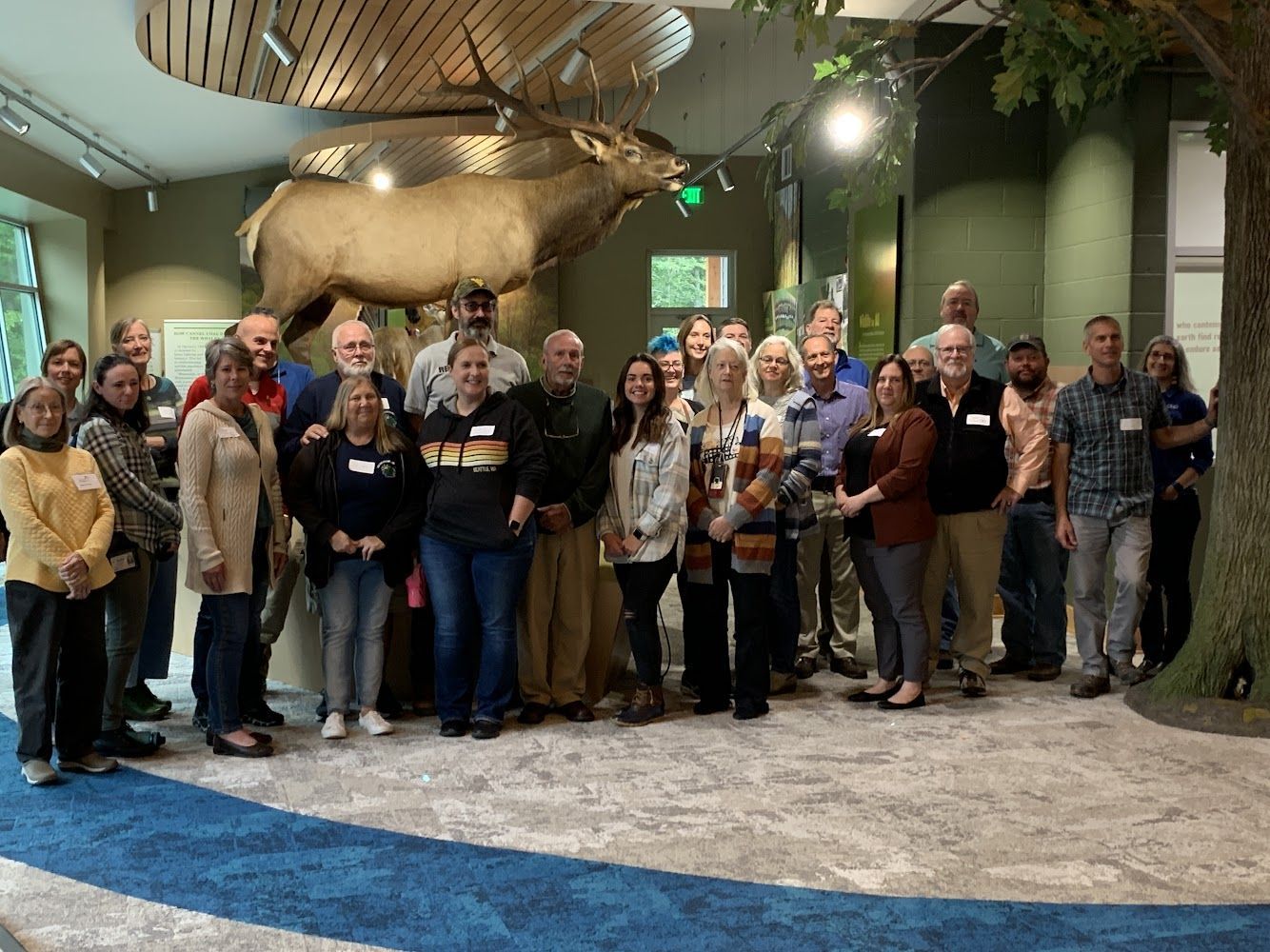 | Group photo in the new Claudia L. Workman Wildlife Education Center. The Western Watershed Basin Gathering was held on Friday, September 30 at the Claudia L. Workman Wildlife Education Center in Alum Creek. Eight watershed groups from the Western Basin were in attendance to share updates, network, and learn about funding opportunities from WV American Water, Army Corps of Engineers, and WV Conservation Agency. Several program and project updates were presented, including Stream Watch, WV Planting Tool, Save Our Streams, One Site Loan Program, and even a Wildlife Education Center tour. Thanks to the sponsors of the event’s food and drinks: WV American Water and Capitol Conservation District. |
| | The Northern Basin Gathering was held in partnership with the West Virginia Rivers Coalition and the WV DEP Watershed Improvement Branch on September 26th at Valley Falls State Park. Sessions included group updates, a discussion of Bipartisan Infrastructure Law (BIL) Abandoned Mine Lands (AML) funding, a case study to address fecal coliform bacteria in a subwatershed of the Buckhannon River, and feedback to agencies and other West Virginia Watershed Network partners. Jonathan Knight from WV DEP Office of Abandoned Mine Lands and Reclamation briefly outlined projects identified for the first round of BIL AML funding, Jason Fillhart from the West Virginia Water Research Institute (WVWRI) described WVWRI's efforts to recover rare earth elements from acid mine drainage, and Amanda Pitzer of Friends of Cheat emphasized that BIL AML funding is a once in a lifetime opportunity to improve water quality across the state, and will require coordination among various stakeholders. The weather started out rainy, but cleared up around noon in time to watch whitewater kayakers paddle the falls! |
|
|
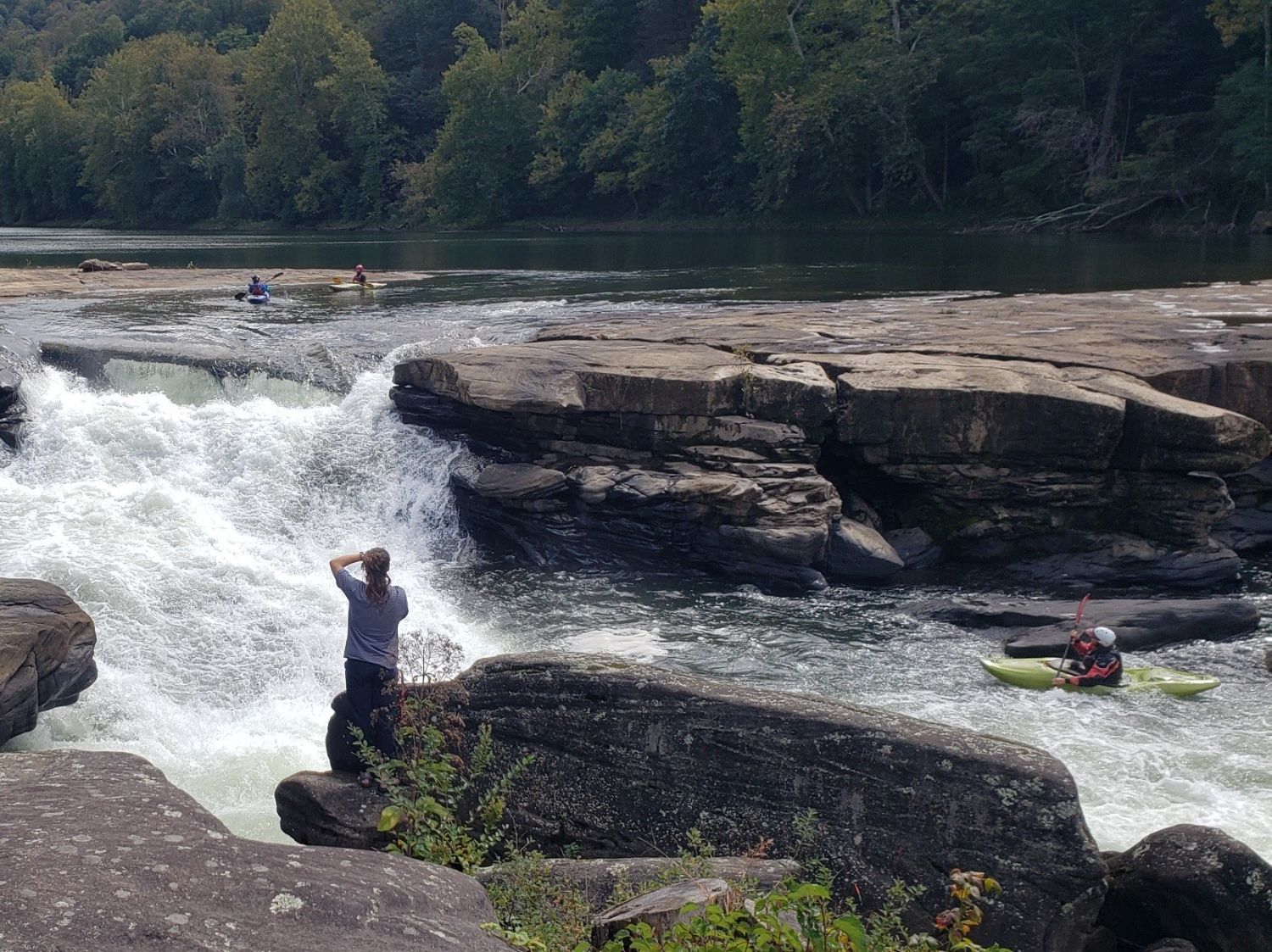 | Whitewater kayakers braving the falls at Valley Falls State Park. |
|
|
| | Updates from Around the State: New Programs, New Rounds of Funding, and Watershed Groups as Trusted Community Organizations |
| Explore Vernal Pools: Monitoring Workshops in Spring 2023 By: Callie Cronin Sams |
| 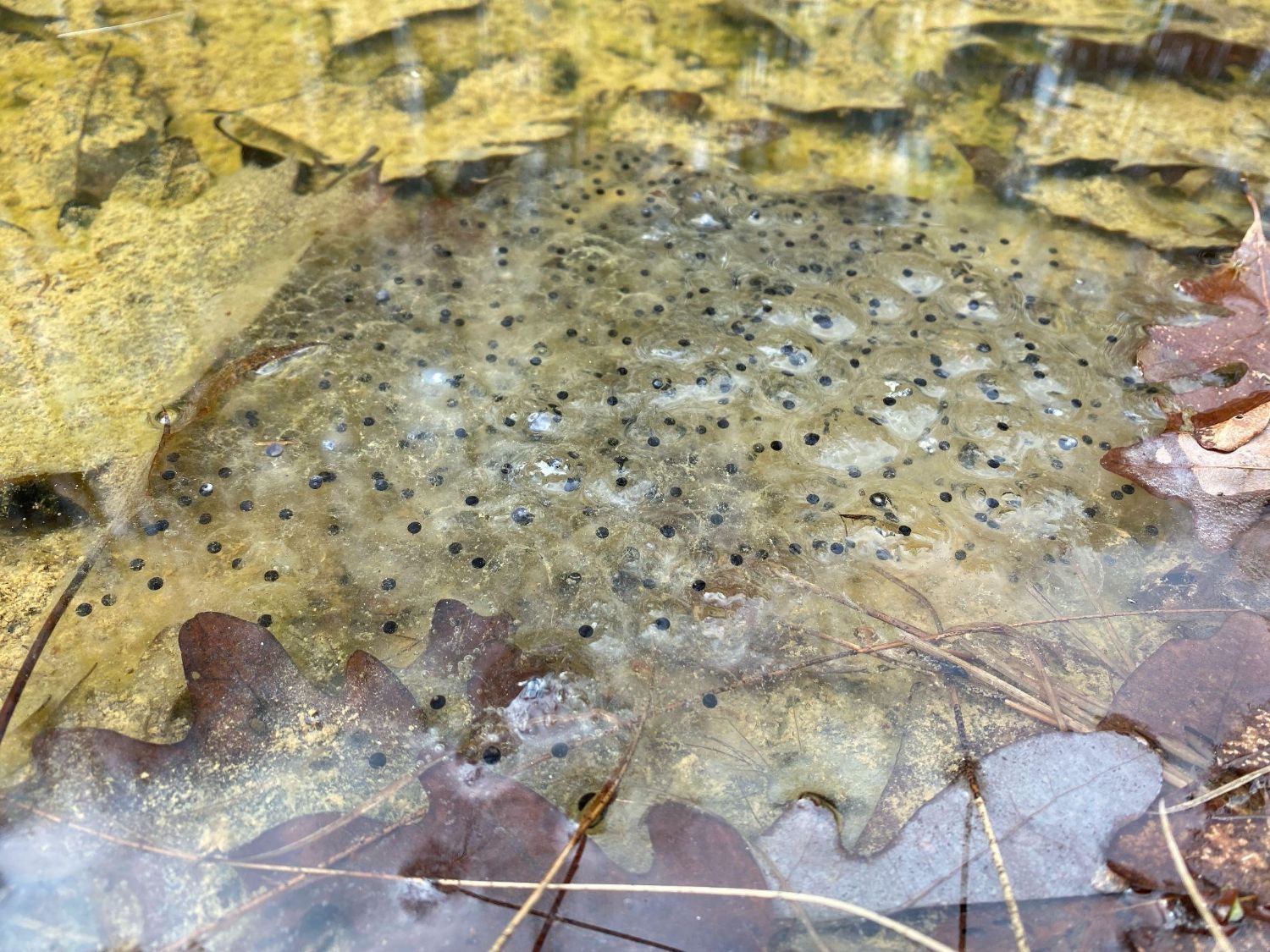 | Wood frog eggs in a vernal pool in Upshur County, early spring, 2022. |
|
|
In March and April, 2023, the West Virginia Department of Environmental Protection (WVDEP) and partner agencies will offer regional vernal pool monitoring training workshops, which will be open to the public. Advanced registration will be required as space is limited. Workshops will be offered near Charleston, Lewisburg, Elkins, and Berkeley Springs. Exact locations, dates, and times will be announced soon. Vernal pools, or ephemeral ponds, are natural or constructed basins that fill with water from rain and snowmelt during the winter and early spring. They provide important breeding habitat for amphibians, such as wood frogs, spring peepers, and salamanders. Because these pools dry out during the dry summer and fall seasons, they do not support fish or other aquatic predators. Their absence makes vernal pools a safer location for frogs and salamanders to lay their eggs and for the young to mature. |
|
|
| Vernal pool water quality and the surrounding forest habitat are critical for the survival of vernal pool wildlife, including amphibians, fairy shrimp, caddisflies, and other species that rely on these temporary sources of clean, fresh water. Unfortunately, development and the resulting habitat loss and degraded water quality may threaten these ephemeral wetlands. |
| Workshop attendees will learn about vernal pool ecology, practice monitoring methods, and visit a pool or pools near the training location. Then, these trained volunteers will continue to monitor vernal pools in their local watershed, providing WVDEP, natural resources professionals, and other interested folks with a greater understanding of the health of vernal pools and their inhabitants in West Virginia. |
| Warm Springs Watershed Association is Community Member's First-Call By: Kate Lehman |
| “Hello. The stream smells like home heating oil. I don’t know how to report this problem.” Although details vary, board members of the Warm Springs Watershed Association (WSWA) receive this type of call all too often. Warm Springs Run flows through an urban watershed. Accidents such as burst sewer pipes, gasoline overflows, and chlorine spills into the Run are more common than one might think. The mission of WSWA is to protect and preserve Warm Springs Run. In order to fulfill these goals in the face of environmental emergencies, it has been necessary to make the existence of the watershed association well known within the community. Board members have not hesitated to make their contact information public so people know whom to contact when something goes wrong. There are emergency numbers to call to report spills into a stream. In this case, when construction workers discovered the spill Monday morning, they knew what to do. By the time the smell was noted downstream, DoH, WVDEP, and EPA had all responded. People who don’t know how to contact these sources are often the first to discover the problem, so they call someone from WSWA. We are happy and grateful to help. |
|
|
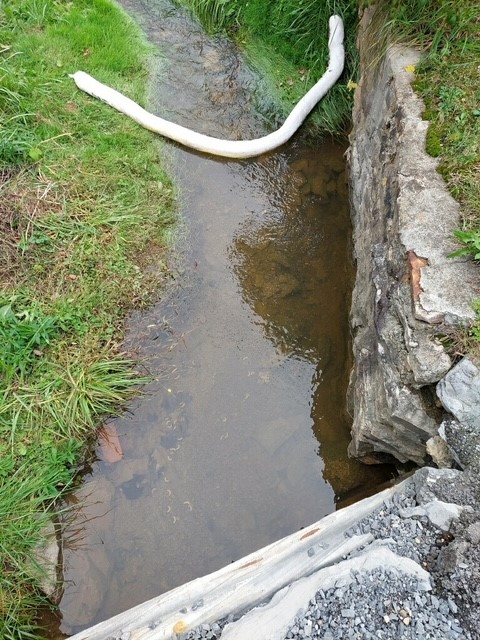 | Oil containment boom and sorbents in Warm Springs Run after an oil spill in early October. Photo credit: Rick Watson. |
|
|
|
|
| Another Round of Non-Point Source Work Begins By: Martin Christ |
|
|
| WV DEP’s Watershed Improvement Branch (WIB) contains a number of programs. One of them is the Nonpoint Source Program. The Nonpoint Source Program receives funding from the Environmental Protection Agency (EPA) to implement best management practices (BMPs) to help streams meet water quality standards. The WIB recently sent out the FY2022 grant agreement documents to subgrantees, who now have just a few years to carry out the work that they proposed. Sending out the grant agreement documents for these projects is exciting for both the WIB and the groups receiving funding. Groups applied for FY2022 support in May of 2021. Their proposals were then reviewed by WIB, packaged into a single proposal from the state to EPA, reviewed by EPA, packaged into a nationwide budget item, and then funded by Congress and the President. After that, it takes a little more time for all the “downstream” administrative layers to cross the t’s and dot the i’s. Projects supported by FY2022 Nonpoint Source funds include mine drainage projects in the Cheat River, Buckhannon River, and West Fork River watersheds, as well as Roaring Creek in the Tygart watershed. There is also support for a fecal coliform bacteria project in the Piney Creek watershed of the New River. The Nonpoint Source program also supports the West Virginia Conservation Agency as it provides resources to farmers who want to keep nutrients and bacteria from entering creeks. Nonpoint Source projects must also contain an outreach and education element. Groups often match the on-the-ground work with publications, outreach programs, and presentations to school groups that explain how important clean rivers and streams are and what we can all do to keep them that way. The Nonpoint Source program, funding, and the work of subgrantees is crucial in reducing nonpoint source pollution, and the WIB is excited for this next round of work. |
| | Drone’s-eye view of one of the ponds in the Lambert Run Site 7 project. West Virginia Water Research Institute and Guardians of the West Fork Watershed will be upgrading this site with support from FY22 funds from the Nonpoint Source Program. |
|
|
| |
|
| | West Virginia Rivers Coalition
3501 MacCorkle Ave SE #129 | Charleston, West Virginia 25304
304-637-7201 | wvrivers@wvrivers.org |
| The WV WaterNet is made possible through an award of Environmental Protection Agency’s 319 funding awarded to the West Virginia Rivers Coalition by the West Virginia Department of Environmental Protection. |
|  | |
|
| |
|
|